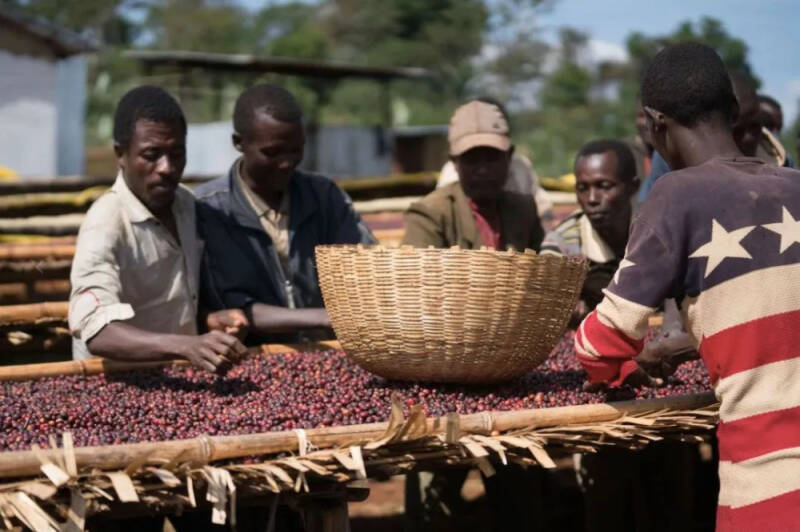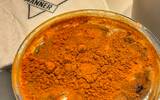Where is the origin of Ethiopian coffee? What are the characteristics of Kafa Forest Coffee?
In Ethiopia, coffee cultivation can be divided into three modes, namely courtyard cultivation, manor cultivation and forest cultivation. Courtyard planting is when coffee trees are planted by farmers in their own backyard or mixed with other crops in their fields, and finally handed over to nearby treatment stations or cooperatives for treatment and export. These methods are most common in Ethiopia, accounting for half of the country's total coffee production.
Manor cultivation is like the Rosa Village manor, which covers a large area and has its own processing plant and laboratory, but this model is relatively rare in Ethiopia, where only about 10% of the country is a coffee farm.

In addition, the most special in Ethiopia is the forest planting model, which is mainly in the Kaffa Zone region of southwestern Ethiopia, where coffee was first found and is the hometown of coffee. At present, there are still countless wild Arabica coffee mother trees growing in the local Kafa forest, under protection.
According to historical records, the reason why the area is called Kaffa comes from an ancient kingdom in history, the Kingdom of Kafa (Kingdom of Kaffa). The kingdom was annexed by the Ethiopian Empire at the end of the 19th century and became part of Ethiopia.
But in the earliest days when coffee was not systematically planted, coffee trees grew wild in the wild south of Ethiopia and formed a dense rainforest. However, due to people's land development, deforestation and other activities, caused damage to the forest. According to the United Nations Food and Agriculture Organization (FAO), the exploitation rate of Kafa forest reached 11000 hectares per year between 1988 and 2008.
So the government divided the area into a Kafa Biosphere Reserve (Kafa Biosphere Reserve), which is surrounded by a number of national parks. The Midwest is the Gesha National Forest Reserve, where the famous Rosa species in Panama come from.
The Kafa Biosphere Reserve covers an area of about 760144 hectares, of which the forest area is 422260 hectares and the forest area is more than 50 per cent. It seems that the Kafa forest is not very different from the ordinary tropical rain forest, which is rich in original ecology, red soil, rainfall and rich vegetation and biology. the difference is that the Kafa forest is made up of coffee trees to a large extent. Coffee trees grow at an altitude of 1400-2100 meters.
Coffee plants will naturally fall with the seeds, or will be transported by animals and birds to other parts of the forest to make them reproduce naturally. At present, the Kafa Forest has given birth to about 5000 coffee tree species, which is the richest gene pool for Arabica coffee varieties. At present, about 30 coffee producers' cooperatives have been established around the Kafa protected area, where farmers harvest coffee berries from the forest during coffee maturity and sell them after treatment.
Qianjie also got a kind of coffee beans from Kafa Forest, which was washed and roasted in medium and shallow, with a faint scent of flowers, bright lemon acidity and sweet orange and bergamot flavor. Huigan has a nutty aroma and tastes like green tea.
For more information about coffee producing areas, please scan the code directly and follow: coffee comments.
Long press the QR code to follow:
Important Notice :
前街咖啡 FrontStreet Coffee has moved to new addredd:
FrontStreet Coffee Address: 315,Donghua East Road,GuangZhou
Tel:020 38364473
- Prev

Nearly 50 stores closed! Starbucks can't resist the boycott trend?!
▲ Click to pay attention| Daily Boutique Coffee Culture Magazine Coffee Factory Recently, according to reports from "China News" and other media outlets, Starbucks has closed nearly 50 stores in Malaysia in the past year. It is reported that due to the Palestinian-Israeli conflict that continues to this day, the American chain brand Starbucks has been criticized by many Muslim consumers around the world.
- Next

Cancel free feeding! Manner cuts benefits?!
▲ Click to pay attention| Daily Boutique Coffee Culture Magazine Coffee Workshop Recently, when a consumer went to Manner Mini programs to place an order, they found that the options they could choose from in the product list on weekdays, such as "cinnamon powder" and "original syrup", have disappeared. Small changes in the ordering interface immediately make the habit of adding coffee
Related
- Orange chocolate latte making ratio parameters and formula sharing! Winter special latte milk espresso recommended!
- How does the degree of roasting of coffee beans determine? What is the difference between espresso beans and hand-brewed coffee beans? Is it better to roast Huakui coffee in the medium or lightly roast it?
- How does water injection style affect coffee flavor? How does the size and height trajectory of the water flow used to brew coffee affect extraction?
- Coffee festival booth recruitment translation reward is coffee beans?! Netizen: Golden beans?
- Be careful every word! Starbucks announcement reminds Mixue Ice City fans to clean up garbage!
- Can cheese be made into espresso? How to make a creative special salty cheese latte?
- It has been opened for less than 2 years! Huzhou's first Tims will be closed permanently!
- Chain tea shops collect gifts and are "customized with the same model"! Merchant: I really didn't expect it
- Mocha pot coffee machine coffee grease extraction skills! Is coffee grease or Crema bubbles?
- What is the difference between siphon pot coffee and hand-brewed coffee? What coffee bean parameters and water temperature ratio are appropriate for the siphon pot to make coffee?

